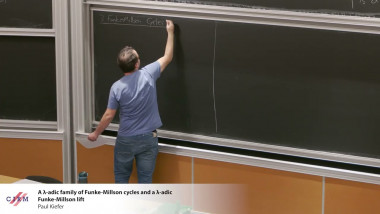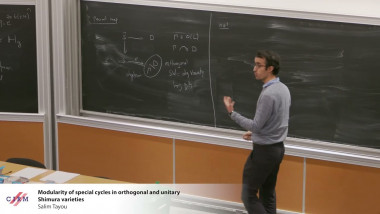
A $\lambda$-adic family of Funke-Millson cycles and a $\lambda$-adic Funke-Millson lift
By Paul Kiefer

Modularity of special cycles in orthogonal and unitary Shimura varieties
By Salim Tayou
By Erik Panzer
Many Feynman integrals evaluate to multiple polylogarithms and their special values like multiple zeta values. One particularly successful approach to understand this phenomenon is due to Francis Brown and uses iterated integrals called hyperlogarithms as a basis for the arising transcendental functions. I will go through the computation of a simple example in detail in order to explain this method, which combines calculus, algebra and combinatorics. The underlying geometric idea of linear reducibility will become clear as well. This hands-on talk aims to be accessible to students of both physics and mathematics.
